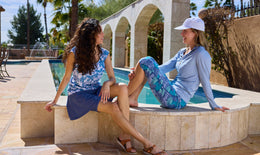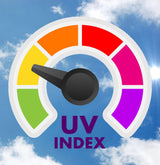Live In Our


13 Spooky Facts About Sun Damage and Skin Health
This Halloween, we're swapping ghost stories for something even spookier: the hidden dangers of UV exposure. Read on to uncover...
Read more
6 Baby Gear Essentials for Outdoor Adventures This Fall
Comfortable, sun-safe picks for stroller walks, park playdates, and everything in between When fall arrives, the weather cools down, but...
Read more
Sun Protection for Fall Travel: What Most People Forget to Pack
Fall is one of the best times of the year to travel. The crowds are thinner, the weather is cooler,...
Read more
Fall Skin Care Tips: Sun Protection & Hydration
As the seasons change, your skin changes too. Cooler weather, lower humidity, and shifting sun patterns all affect how your...
Read moreThe Most Popular Articles

Dermatologist-Approved, Get Your Best Winter Skin Tips
As the winter season unfolds and temperatures start to drop, it's crucial to take care...
Read more
Understanding UPF Clothing: Your Shield Against the Sun
At UV Skinz, our mission isn't just about making top-notch sun-protective clothing—it's also about educating...
Read more
4 Tips on How to Layer UPF Clothing for Winter Outdoor Activities
As the winter season approaches, friends and family members are starting to make plans for...
Read more
How to Choose the Right Hat for Your Face Shape: Sun Hats Edition
If you’re wondering how to choose the right hat for your face shape, you’re in...
Read moreOur Latest Articles

What Is UPF Clothing and How Does It Work?
When it comes to sun protection, most people think of sunscreen first. But there's another line of defense that's just as...
Read more
Celebrating Women’s Equality Day at UV Skinz
At UV Skinz, Women’s Equality Day is more than a date on the calendar, it’s a reflection of who we are...
Read more
Back-to-School Sun Protection: Why It Matters and How to Protect Your Kids
A new school year brings fresh routines, packed lunches, and more time outside than you might expect. From morning recess to...
Read more
Understanding the UV Index: What It Is, Why It Matters, and How to Plan Around It
Every day, we check the weather to decide what to wear or whether to bring an umbrella. But there’s another number...
Read moreKids’ Sun Protection
5 Best Baby Swimsuits, From Infant to Toddler
When it comes time to get your little one dressed for the beach or pool,...
Read moreEverything You Need to Know About UPF Swimwear
Imagine you're about to head to the beach with your family. You've packed your sunscreen,...
Read moreAll You Need to Know About the Best Baby Sun Hats in 2023
As a responsible parent, keeping your newborn or baby protected from the sun's rays should...
Read moreBaby Sun Protection Guide: 9 Tips to Keep Your Infant Sun-Safe This Summer
Younger children and babies have more sensitive skin, which makes them more likely to overheat...
Read moreBest 6 Sun Protective Clothing Options for Babies and Kids
You may be surprised to know that youngsters are exposed to the sun three times...
Read more



